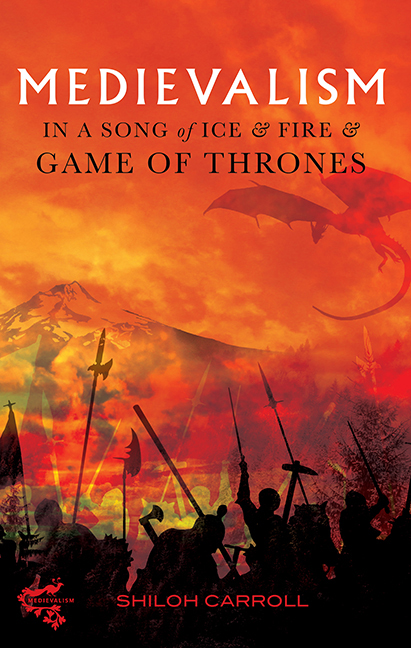Book contents
- Frontmatter
- Contents
- Acknowledgements
- Author's Note
- Introduction: Martin and Medievalist Fantasy
- 1 Chivalric Romance and Anti-Romance
- 2 Masculinity, Femininity, and Gender Relations
- 3 Sex and Sexuality
- 4 Postcolonialism, Slavery, and the Great White Hope
- 5 Adaptation and Reception
- Afterword: “Fantasy for people who hate fantasy”
- Bibliography
- Index
- Medievalism
Afterword: “Fantasy for people who hate fantasy”
Published online by Cambridge University Press: 09 October 2019
- Frontmatter
- Contents
- Acknowledgements
- Author's Note
- Introduction: Martin and Medievalist Fantasy
- 1 Chivalric Romance and Anti-Romance
- 2 Masculinity, Femininity, and Gender Relations
- 3 Sex and Sexuality
- 4 Postcolonialism, Slavery, and the Great White Hope
- 5 Adaptation and Reception
- Afterword: “Fantasy for people who hate fantasy”
- Bibliography
- Index
- Medievalism
Summary
AS A GENRE, medievalist fantasy is often not taken seriously, at least in part because of its blend of medievalism and fantasy; neither has been particularly well regarded by the academy or those parts of the public that frown on “escapism” and genre literature. Medievalism itself suffers from its association both with the medieval – often used as shorthand for barbaric, backwards, stupid, and infantile – and with inaccuracies and bad history. Medievalism studies are frequently seen as the lesser cousin of medieval studies, the consolation prize for scholars in countries that do not have a medieval history as it is typically understood in Europe. Fantasy, likewise, has been derided as escapist, childish, even psychologically dangerous, and has its own connections to the medieval, particularly through romance, that further keep it from being treated seriously. Thus, it is no real surprise that Martin so vocally rejects the usual tropes of medievalist fantasy and strives for realism and a grounding in medieval history; historical precedent and a lack of traditional fantasy elements might lead to his work gaining more respect than that of other fantasy writers. That attempting to make medievalist fantasy more palatable to those who traditionally frown on such things requires a “grimdark” approach and insistence on the worst parts of the human condition – violence, rape, slavery – being foregrounded is unfortunate. While a medievalist and/or fantastic setting may allow readers and writers to examine modern issues at a comfortable remove, it can also reinforce the stereotypical understanding of the Middle Ages as the “Barbaric Age” – dirty, violent, brutal, patriarchal, sexually deviant – while allowing readers and writers to gloss over the fact that modern life has many of these same issues, to believe in the myth of progressive history and relegate inequality and savagery to the distant past.
The insistence on a realist medievalism also invites criticism on grounds of accuracy and authenticity, shifting the focus from traditional literary analysis to whether Martin got the Middle Ages “right.” While examinations of Martin's source materials can be valuable and interesting (see, for example, Carolyne Larrington's Winter is Coming [2016]), especially as a gateway to history for those interested in such things, it is important to keep in mind that A Song of Ice and Fire is, ultimately, high fantasy, not set in any approximation of the historical Middle Ages.
- Type
- Chapter
- Information
- Medievalism in A Song of Ice and Fire and Game of Thrones , pp. 181 - 186Publisher: Boydell & BrewerPrint publication year: 2018

